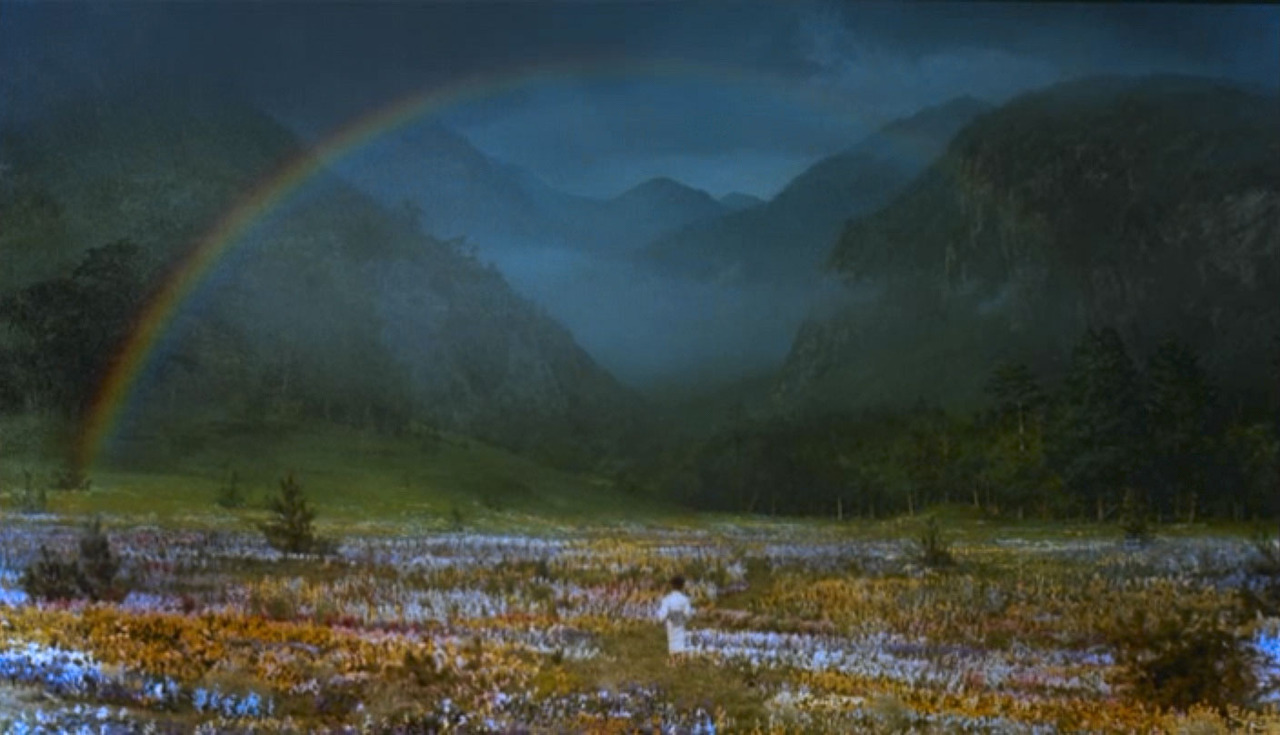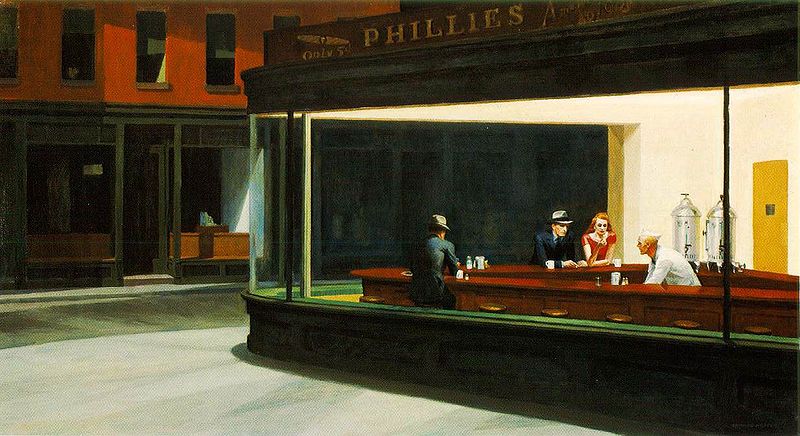Akira Kurosawa’s Dreams (夢,Yume): a mostly quiet, artful film with eight short vignettes (five dreams and three nightmares) reflecting the remembered dreams of the director throughout his lifetime. Despite the segments being separate, discontinuous stories, I enjoyed their shared abstract sense of looking for something, a great dream motif. Unfortunately the quality of the pieces vary, but the ones that are good border on the sublime. In some ways they remind me of animated versions of Jeff Wall’s artifically-constructed photographs (but maybe I’m just conflating this film’s first nightmare with Wall’s Dead Troops Talk).
Like many of his other later movies, Kurosawa had difficulty getting this film financed by the Japanese studios, but a script sent to Steven Spielberg helped secure money from Warner Bros. Interestingly, the visual effects in the movie (including a walking-through-an-oil-painting sequence later echoed in What Dreams May Come) were supervised by Ken Ralston of Industrial Light and Magic (of Star Wars and Back to the Future fame), and there’s a cameo by Martin Scorsese as Vincent van Gogh, so despite the traditional Japanese cultural elements, there’s definitely a Western tinge to this one.
Other good movies about dreams and dreaming:
- 8½ (film and memory as dream)
- Brazil (dreams as heroic escapism)
- Waking Life (once you get past the philosophizing, it clicks)
- The Science of Sleep (not my favorite Gondry film, but fun)
- Hatsu Yume (Bill Viola’s video art piece, worth mentioning even if it’s not strictly a ‘movie’)
- Paprika (vividly crazy dream visuals from an anime master)
- I assume that Inception and Vanilla Sky / Abre los ojos should be in this list, but I haven’t seen them yet…
Any others I should know about?




